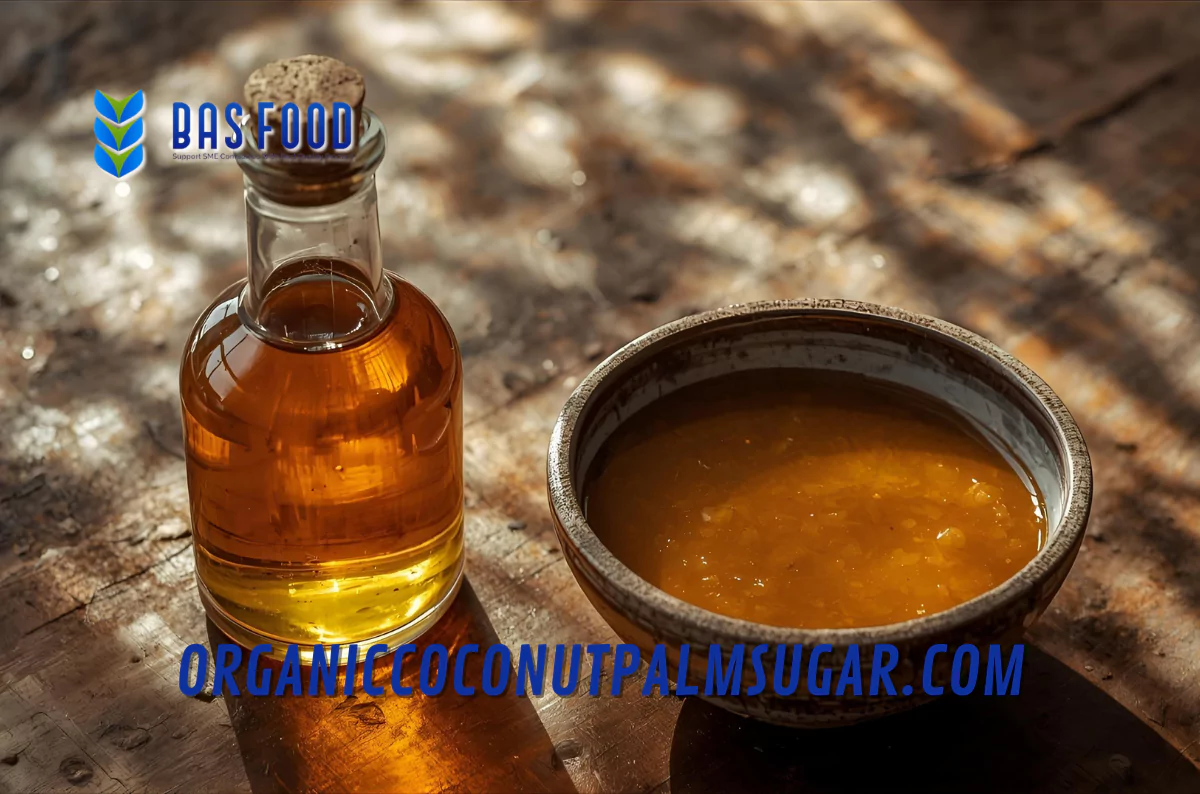When people think about dark, rich sweeteners, molasses usually comes to mind. However, a newer contender—coconut nectar treacle—is quickly catching attention as a natural, tropical alternative. At first glance, these two products look similar: both are dark, thick, and loaded with flavor. Yet, once you dig deeper, the differences become fascinating.
In this article, we’ll break down coconut nectar treacle vs molasses, exploring their origins, production methods, nutritional benefits, and how they fit into modern kitchens. Along the way, we’ll also look at how coconut sweeteners are being positioned as natural molasses alternatives for healthier lifestyles and food innovations.

Origins: Where Do Treacle and Molasses Come From?
Molasses has a long history tied to sugarcane and sugar beet production. It is the thick syrup left behind after sugar crystals are extracted during refining. Historically, molasses was used across the Caribbean, the Americas, and Europe, not just as a sweetener but also as a base for rum. It carries cultural weight, being part of traditional recipes from gingerbread to baked beans.
On the other hand, coconut nectar treacle originates from the coconut palm. Farmers tap the coconut flower sap, then simmer it slowly until it thickens into a glossy, caramel-like syrup. Unlike molasses, treacle doesn’t rely on sugar refining. Instead, it comes directly from a natural, renewable source that has been used in Southeast Asia for centuries as both a sweetener and a cooking ingredient.
Production Methods: A Treacle Comparison to Molasses
The process of making molasses is intensive. Cane or beet juice is boiled, crystallized, and re-boiled multiple times. After sugar extraction, the leftover syrup is what we know as molasses. Depending on the number of boiling stages, the flavor ranges from mild to strong, with blackstrap molasses being the darkest and most bitter.
Meanwhile, coconut nectar treacle requires less refining. Farmers collect sap from coconut blossoms and heat it gently to reduce water content. The result is a syrup with a distinct caramel-like flavor and a lighter, more natural sweetness. This makes it a strong candidate in the treacle comparison conversation, especially for those seeking minimally processed options.
Flavor and Culinary Uses: Coconut Sweetener Substitute on the Rise
Flavor is where coconut nectar treacle vs molasses really shines as a comparison. Molasses brings a strong, earthy taste with hints of bitterness and smoke. It works well in robust recipes like barbecue sauces, gingerbread, and dark breads.
Coconut nectar treacle, by contrast, has a mellow caramel sweetness with a slightly fruity undertone. It blends smoothly into beverages, desserts, and sauces without overpowering them. Because of this, chefs and bakers often use it as a coconut sweetener substitute when they want the richness of molasses but with a softer profile that appeals to wider palates.
Nutrition: Natural Molasses Alternatives for Health-Conscious Lifestyles
Health is a big factor in the popularity of treacle. Molasses does contain nutrients such as iron, calcium, and magnesium, especially in its blackstrap form. However, it also carries a strong taste that limits its use in everyday recipes.
Coconut nectar treacle, on the other hand, offers a lower glycemic index than refined sugars and retains trace minerals from coconut sap. This makes it attractive as one of the leading natural molasses alternatives in modern diets. People seeking to reduce sugar spikes or find plant-based sweeteners often turn to coconut-derived options.
Market Trends: Why Coconut Nectar Treacle Gains Global Attention
The global shift toward natural and sustainable sweeteners is giving coconut nectar treacle a bigger platform. Consumers want authenticity, fewer additives, and environmentally friendly products. Since coconut palms are abundant and sustainable, their nectar is a perfect match for this demand.
Molasses still has its place, especially in traditional cuisines and baked goods. Yet, in the coconut nectar treacle vs molasses debate, treacle is gaining ground as a versatile alternative. It not only satisfies the sweet tooth but also aligns with eco-friendly and health-focused trends.
Practical Substitution: How to Use Each in the Kitchen
When it comes to swapping, it’s important to understand ratios. Molasses is stronger in flavor, so using it in place of treacle can overwhelm a dish. On the other hand, coconut nectar treacle can usually be substituted one-for-one for molasses, especially in beverages, glazes, and lighter desserts.
For bakers, it’s best to experiment. Treacle provides moisture and sweetness without bitterness, which is perfect for cakes and cookies. Molasses works better in hearty breads, sauces, and recipes that need depth. Both sweeteners bring unique personalities to the table, making them complementary rather than competitive.
CV Bonafide Anugerah Sentosa: A Trusted Coconut Supplier
In the growing demand for natural sweeteners, suppliers play a critical role. CV Bonafide Anugerah Sentosa stands out as a reliable partner, offering high-quality coconut-based products, spices, and even fishery commodities from Indonesia. With strong sourcing practices and a commitment to quality, the company supplies coconut nectar treacle and related products to global markets.
For businesses searching for a dependable spices supplier and coconut supplier, Bonafide Anugerah Sentosa provides not only consistency but also expertise in connecting traditional farming with modern export standards. Their work ensures that ingredients like coconut treacle reach international kitchens in top condition.
Conclusion: Choosing Between Treacle and Molasses
At the end of the day, the choice between coconut nectar treacle and molasses comes down to taste, health goals, and recipe needs. Molasses remains a staple in many heritage recipes, while treacle is emerging as a modern, versatile, and healthier coconut sweetener substitute.
As global food trends lean toward sustainability and natural products, coconut nectar treacle is likely to keep gaining popularity. Whether you’re a home cook experimenting with new flavors or a food brand seeking better sweetener options, knowing the differences in this treacle comparison will help you choose wisely.
Contact CV Bonafide Anugerah Sentosa how we can provide the best solutions for you. WhatsApp: +62 8213 4505 737, Email: info@bonafideanugerahsentosa.com / bas.mdir@gmail.com.

